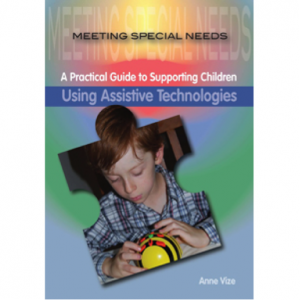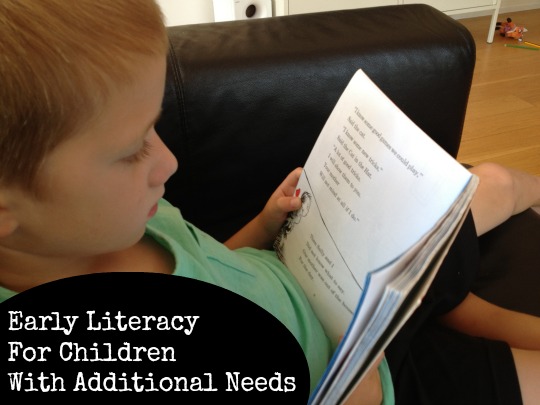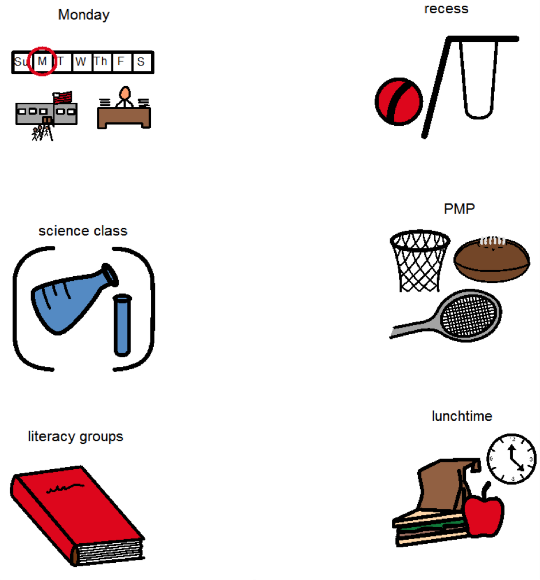 Today’s guest post is from Anne Vize and part of my 2013 literacy series. Anne is an educational author and former special needs teacher who specialises in writing for and about children with additional needs. She writes for Melbourne publisher Teaching Solutions. Her most recent books include ‘Using assistive technologies,’ ‘Coeliac disease and gluten intolerance’ and ‘The A to Z of Special Needs’. You can learn more about Anne’s writing through her profile at the Australian Society of Authors website.
Today’s guest post is from Anne Vize and part of my 2013 literacy series. Anne is an educational author and former special needs teacher who specialises in writing for and about children with additional needs. She writes for Melbourne publisher Teaching Solutions. Her most recent books include ‘Using assistive technologies,’ ‘Coeliac disease and gluten intolerance’ and ‘The A to Z of Special Needs’. You can learn more about Anne’s writing through her profile at the Australian Society of Authors website.
*************
As school resumes for another year, lots of children and parents are eagerly getting stuck into labelling books and folders, finding missing school hats and restarting routines. A new year can mean a change of location, a transition from one teacher to another a new room, and the chance to start some new friendships and revisit existing ones. For children with additional needs, this can be a challenging time full of concerns about how well the child will settle after a change of routine and what will happen with their learning during the year.
There is a lot that parents and teachers can do to help build and support literacy skills for children with additional needs in those critical early years of pre school and junior primary. This is the period where difficulties may be noticed for the first time, or where extra support structures may be required to help skills to flourish and confidence to blossom.
Planning early and well
Early planning can be a great help to the child as well as the teacher. Most settings have systems in place to write individual plans for children with additional needs. This can cover all the learning areas, and can include information about how the child learns best and what techniques are effective in the classroom as well as in specialist classes and outdoors. By setting up a student support group meeting early in the year, it means that precious time is not wasted and good quality learning can begin straight away. It also means that the teacher can be on the front foot in knowing what difficulties might arise, and be better equipped to deal with them. For children who are making the transition to ‘big school’, a transition plan can help them settle well and get the most out of their first weeks of school. Have a chat to your teacher, assistant principal or principal about the structures in your setting to support children with additional needs – they should be quite happy to talk you through how they can help you and your child.
Going visual
Have you ever noticed just how much information your eyes can take in without reading a word? Our world is full of visual information, from street signs and directions to shop windows signs at work and out and about in the community. Visual information relies on a common shared understanding of symbols and pictures. Over time we learn that symbols like a red circle with a diagonal line means something can’t be done or is not in use, and that white writing against a green background is used for an exit from a building or room.
Knowledge of visual literacy can be really helpful for young children who have not yet mastered reading text. A visual schedule used at home and school or pre school can help when children struggle to know what to do next, or like to know what to expect in a day’s activities. A visual schedule is easy to create with a commercial program like Boardmaker or Pics for PECS, or you can make your own simply by drawing some pictures or symbols of the day’s tasks on small squares of cardboard and laminating them. Most children feel comfortable with a routine, and a visual schedule can help them understand, plan and predict the course of their day. This often considerably reduces their level of stress, and also lets them master some organisational skills like getting their lunch box ready for a lunch break or finding their library bag for library. Some children like to take off each card from their visual schedule when the activity is finished and place it in a special box or envelope. This helps them keep track of where they are up to in their routine. Over time the visual symbols can be combined with the text to reinforce the use of written language for daily activities.
Here’s how a visual schedule could work for a young child made using Boardmaker. Each symbol reminds the child about what happens next in their day. The day is predictable and structured. Symbols and words are simple and familiar, which can help reinforce early literacy skills.
The Picture Communication Symbols ©1981–2011 by Mayer-Johnson LLC. All Rights Reserved Worldwide. Used with permission.*
Using memory
Memory plays an important role in learning to read. Memory is much more than just being able to recall what you did on the weekend. It also means being able to take in information through your eyes and ears, and store that information so it can be taken out again and used. Some children have difficulties with their auditory (hearing) or visual (seeing) memory. This does not mean they have a hearing or visual impairment in the traditional sense. Rather it means they have difficulty taking in information, storing it and retrieving it easily. Being able to use the information that has been taken in is often called ‘working memory’. Sometimes a problem with early literacy can relate to problems with the various types of memory. For example, working memory skills could be the problem for a child who has trouble remembering and carrying out a sequence of instructions or steps, remembering items which are no longer in view or being able to work out the visual differences between two similar shapes or pictures.
Memory can be supported through lots of games, and this can be a fun way of helping a child who is struggling to read easily to master some of the sounds and symbols that go along with written text. Here are some fun ideas to try:
- Put some objects on a tray and ask the child to look at them for a short time, then cover the objects and see how many can be recalled
- Play a game like ‘Captain’s Coming’ where auditory instructions need to be matched with quick actions (captain’s coming – salute, climb the rigging – climbing action, scrub the decks – kneel on the floor and pretend to scrub, bow – run to one end of the room, stern – run to the other end of the room etc)
- Five second picture game – look at a series of pictures for five seconds and then see how many can be recalled once the pictures are no longer in view
- Play a memory card game where cards need to be turned over to make a pair
- ‘I went to the shop and I bought a…’ – each person adds another item to the list so the auditory memory gets a good workout as the game continues!
- Say nursery rhymes or funny poems out loud
- Say a sentence such as ‘Dan read a book about sheep on Sunday before he went to play at his Grandma’s house’ then ask questions about the sentence such as ‘what day was it?’ or ‘what was the book about?’
Asking the hard questions
If your child is showing significant difficulties with memory skills, can’t make rhyming words (what rhymes with ‘bat’?) or has trouble hearing and counting or clapping syllables in words (el/e/phant = 3 syllables) or seems to have trouble generally with learning to read and write, it could be worth exploring how they are doing in other areas of learning. You may discover that there are some problems which are beginning to show through, or you might find that your child is doing well providing they are being taught in a way which focuses on the things they can do well, rather than the things they cannot.
Ask questions at school or pre school about their progress, and whether there are causes for concern. At the school level, ask what literacy strategies and testing methods are being used, and whether there is a multi sensory approach and explicit teaching of letters and sounds in a structured and sequential way. Find out what additional supports are available such as Multilit, speech pathology or occupational therapy assessments, small group work or some home based activities. Parents often become quite adept at being their child’s chief advocate (the person who asks the hard questions!) and this is vital in helping them get the support they need to learn in a way which works for them.
Using technology
There are lots of technology tools that can be helpful if a child is having trouble with literacy skills, or if they have some specific additional learning needs. Programs like Boardmaker can make it easy to generate symbols and create stories and sentences with embedded symbols for easier reading. Clicker Books have simple stories with an on screen read aloud feature so the child can listen to the story being read as they follow the words. Clicker also has loads of writing tools to support children with additional needs, such as word prediction, coloured symbols, customised image libraries and sentence building grids to guide the writing process. There are an increasing number of book apps available which combine visual and auditory elements, so a child can follow a story while it is being read aloud. It is important to remember that when it comes to technology, the best place to start is with the child and their specific needs, rather than with the technology itself. While this sounds obvious it is amazing how easy it is to get swept away with your own enthusiasm for a great looking product, and to buy something that does not really suit the child and the way they learn.
After all, good support for early literacy with young children means thinking carefully about how a child seems to learn best, and then teaching them in that way.
Do you use technology to support early literacy with your kids?
* Boardmaker® is a trademark of Mayer-Johnson LLC.
DynaVoxMayer-Johnson
2100WhartonStreet
Suite400
Pittsburgh,PA15203
Phone:1(800)588-4548
Fax:1(866)585-6260
Email:mayer-johnson.usa@mayer-johnson.com
Web site: www.mayer-johnson.com


